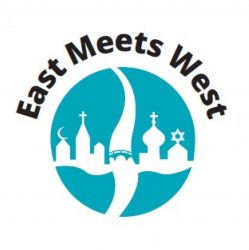Where East Meets West

Heta Hurskainen
I welcome you to read our blog, “East Meets West”! The blog’s hub is the School of Theology at the University of Eastern Finland (UEF). Despite the word “Eastern” in the name of the university, our School of Theology offers both Orthodox and Western theology to study and research. East meets West at this university – it’s especially true in this blog!
The particularity of the blog and its writers are that they represent both Eastern and Western theological orientations and have worked and researched topics together, not just side by side, but together in a creative and critical manner. During the blog’s first year, writers of the blog are affiliated with the School of Theology at the UEF, and the blog aims to bring the particularities of this special hub and its research to a wider conscience.
Joensuu, situated in North Karelia in Finland, is an excellent place to research questions relating to religious and cultural exchanges between the East and West. Today, Karelia is an area situated on both sides of the Finnish-Russian border. Christianity came to Finland at the beginning of the 12th century – from the East in its Orthodox form and from the West in its Catholic form. The two forms met in the part of Karelia that now belongs to Finland. Throughout our history, encounters between the two have not always been peaceful or easy. The political order and societal situations have changed; in fact, even the main form of Western Christianity has changed from Catholicism to Lutheranism, and the Orthodox jurisdiction here has changed from the Moscow Patriarchate to the Ecumenical patriarchate. However, history has also brought with it ways to understand and respect each other.
Joensuu’s city planning itself cements the encounters: At the south end of the street, called “Kirkkokatu” (Church Street), stands a Lutheran church belonging to the Evangelical-Lutheran Church of Finland, which represents 68% of Finns, but at the north end of the same street is the Orthodox Church, belonging to the Orthodox Church of Finland and representing 1% of the Finnish population. Both churches are “state churches”. Joensuu’s city planning exemplifies how things we expect to be in the East or West are also found in other geographical dimensions. East and West are not just geographically constructed dimensions; they are also, and especially in this blog, fluid dimensions of thinking and creating. Within Western Christianity, culture or religion, you can find Eastern thinking and vice versa.
The School of Theology as part of the UEF belongs to the state university, which makes the researchers independent but not isolated from the society and environment around it. East Meets West is not only about the Eastern and Western branches of Christianity. It is a wider concept under which religions and their connections to the diversity of life can be studied. The focus is on the specifics of East and West connections and the various types of encounters. These encounters take place in the fields of culture, society, history, doctrine, migration, education, politics and their interactions.
The start of our blog takes place at a time when researchers are asking whether we are going into or might even be in a new Cold War era. Instead of encounters, it seems that the different barriers and borders are drawn and demarcated. One example of finding new encounters and drawing new lines is found in Ukraine. The country struggles with itself and with its Eastern (Russia) and Western (EU) neighbours about its political and cultural belonging. At the same time, and already for centuries, its Christianity, mainly Orthodox, has been in the middle of “meet” or “encounters” or “border” of East and West. Orthodoxy is vibrant in the country but not uniform.
In Ukraine, several churches call themselves Orthodox. Ukraine’s orthodoxy is also a platform for juxtaposing between the Moscow Patriarchate and the Ecumenical Patriarchate. Just a week before publishing this post, the Ecumenical Patriarchate Bartholomew visited Ukraine. He met with hierarchs and people from the Orthodox Church in Ukraine (OCU), to which the Ecumenical Patriarchate granted autocephaly, full independence, at the beginning of 2019. The Moscow Patriarchate, who had previously reacted to every visit made by the Ecumenical Patriarch to Ukraine, ignored the visit completely. To study the problem more deeply, The School of Theology at the UEF organizes its first “East Meets West” conference, “Ukraine and Russia: always together – always in separation” on 4 October. Our next blog post will also take a closer look at Ukraine, and soon we will also launch a mainly Finnish speaking podcast, “Idän ja Lännen kohtaamisia”, which starts with the focus on Ukraine.
After this focus on Ukraine, the blog will explore other academic aspects of “East Meets West”, while the podcast will continue with themes and approaches for those who want to get acquainted with why and how “East Meets West” matters.
This is a journey on which I welcome you to join. Welcome to our blog!
Author: Heta Hurskainen, blog editor
Hurskainen, ThD is Assistant Professor of Systematic Theology at the UEF. Her research interests are in ecumenical relations of Orthodox and Lutheran churches, questions of Orthodox migrants, and in Russian and Ukrainian Orthodoxy, as well as their relations with politics.
heta.hurskainen(at)uef.fi